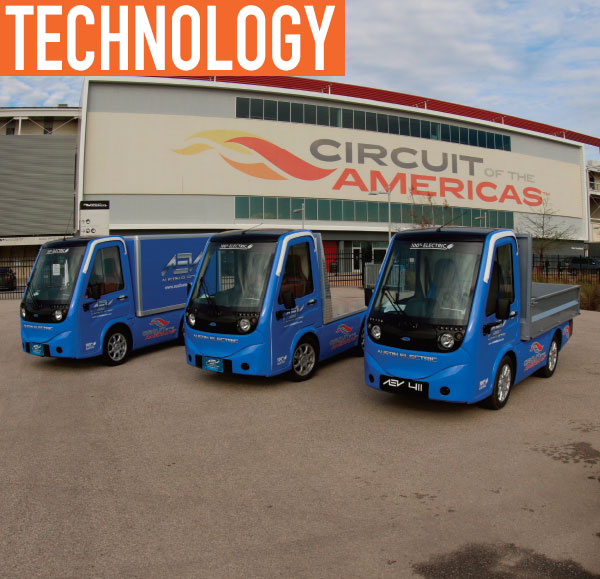Within the current fleet marketplace, trucks are the go-to platform for deliveries. From long-haul to last mile, trucks have been the easiest option for decades. For years, trucks have evolved into niche categories to address each facet of the delivery process, from port to porch. Whether it’s an 18-wheeler, a box truck, or anything in between, the delivery market relies on the abilities of trucks, large and small.
The Holy Grail of sustainability is electrifying these trucks, and many companies are actively developing solutions. With electric, you’re only as good as the charge you carry, so scaling batteries to reliably power trucking is a challenge, to say the least, at this point.
ELECTRIC AND DELIVERY
According to the McKinsey and Company September 2016 report, “Parcel Delivery: The Future of Last Mile,” “the last mile’s hefty share in total parcel delivery cost—often reaching or exceeding 50 percent—makes it a key process step for those seeking to gain a competitive advantage.”
Currently, last mile delivery vehicles include box trucks, vans, and modified pickup trucks, all largely gas- or diesel-powered. Costs associated to these options include not only fuel, but also maintenance and repair in the forms of fuel systems, exhaust systems, and transmissions.
The other not-so-hidden-anymore cost associated to fossil fuel vehicles is carbon emissions. According to the EPA, a typical passenger car emits 4.7 metric tons of CO2 annually. That’s an astonishing rate of approximately 19.5 lbs per gallon and almost 1 lb (.91) per mile. With trucks averaging far less than the EPA’s benchmark of 21 miles per gallon, the carbon emissions for trucks, especially diesel-powered ones, is much more. Incrementally, the quality of air can improve with each gas/diesel vehicle removed from the delivery cycle.
At this juncture, the autonomous ground vehicle (AGV) market is still not a viable modern-day option. In the future, tech forecasts project a share of 80 percent AGV and drone for the last mile market. Until that day when AGVs are a legitimate option, electric light-duty trucks have a seat at the table.
ANOTHER OPTION
Sustainability is another way of saying that carbon-based emissions can be reduced along with operating costs. As much as helping the environment is a noble concept, if a solution doesn’t make sense economically, it’s quite difficult to justify the investment.
Enter the 411 Utility from AEV Technologies, Inc. based in Round Rock, Texas. The 411 is a feature-rich, all-electric light-duty truck designed to address the last mile market. With a range of up to 50 miles and proprietary State of Charge (SOC) algorithms, drivers and fleet operators have an up-to-the-second analysis of the 411’s true remaining range.
Add in the AEV Productivity Suite which features built-in GPS Location, Geo Fencing, Delivery Cycle Time, and Vehicle Management/Alerts, and the 411 is a fleet manager’s dream. Whether the analysis is needed in near real-time or post-event, the AEV Productivity Suite tools can help the fleet management maximize its assets day after day.
HAUL POWER
Cargo capacity has long limited the effectiveness of other electric vehicle options like golf carts and light industrial in the last mile market. The 411 Utility has built its foundation upon a robust 1,100-lb payload capacity, a towing capacity of 1,100 lbs, along with multiple bed options. The 411 comes standard as a fold-down pickup but is also available as a flatbed or a box truck. The 411 box truck option features 123 sq ft of capacity with rear and side door access points.
SAFETY FEATURES
Safety need not be compromised when it comes to a light-duty electric truck like the 411. The AEV 411 comes standard with impressive safety features like best in class braking distance (25 to 0 mph in less than 25 ft), backup camera with an in-dash monitor, power disc brakes, power steering, Bluetooth hands-free calling, a reinforced steel chassis that exceeds European safety standards, windshield defroster, and a steel reinforced battery area.
Creature comforts are sometimes neglected in delivery trucks, but the people who use the vehicles every day appreciate having even the little things included. Every 411 comes standard with cabin ventilation and heating, AM/FM radio, cup holders, a 12-volt power outlet, dome light, sun visors, overhead storage, and seats with headrests.
Agility is a huge asset when it comes to the 411. With a turning radius of 13 ft and an inch, it can literally turn on a dime. The size of the 411 is also a valuable benefit, especially to the urban delivery market. At just over 4.5-ft wide by 12 ft in length, the 411 can fit into tight spaces with room to spare.
A TRUCK FOR ALL
In addition to the massive delivery market, the 411 Utility is also a viable solution for maintenance, logistics, agriculture, and promotional vehicle markets. With its adaptable platform, the 411 can wear many hats for many industries. Due to its stout frame, the 411 has already found new uses as people movers, garbage trucks, and even fire trucks.
At the 1,100-acre Circuit of the Americas race and entertainment complex located near Austin, Texas, a fleet of eight AEV 411 trucks is deployed daily for maintenance, deliveries, and event support. COTA’s 411 fleet includes four flatbeds, three pickups, and one cargo box configuration.
“We are excited about our partnership with AEV Technologies as they are providing COTA with extremely practical and 100 percent electric utility vehicles,” says Edgar Farrera, COTA’s director of sustainability. “They also help COTA meaningfully advance our sustainability goals. On top of that, everyone is fighting over who gets to use them!”
Electric light-duty trucks like the AEV 411 have a well-deserved spot in the professional market. Whether it’s a last mile solution or a warehouse workhorse, the 411 makes sense on many levels.
When compared to gas- and diesel-powered alternatives, the 411 allows fleets to realize a return on their investment in as little as 18 months. With a typical asset remaining on a ledger for three-plus years, the AEV 411 can continue to work each day, even when it’s no longer on the asset list.
Remarkable, huh?
FOR MORE INFORMATION
Find out more about the AEV 411 Utility, visit www.aevgo.com.
MODERN Worktruck SOLUTIONS: APRIL 2018 ISSUE
Did you enjoy this article?
Subscribe to the FREE Digital Edition of Modern WorkTruck Solutions magazine.
![]()





